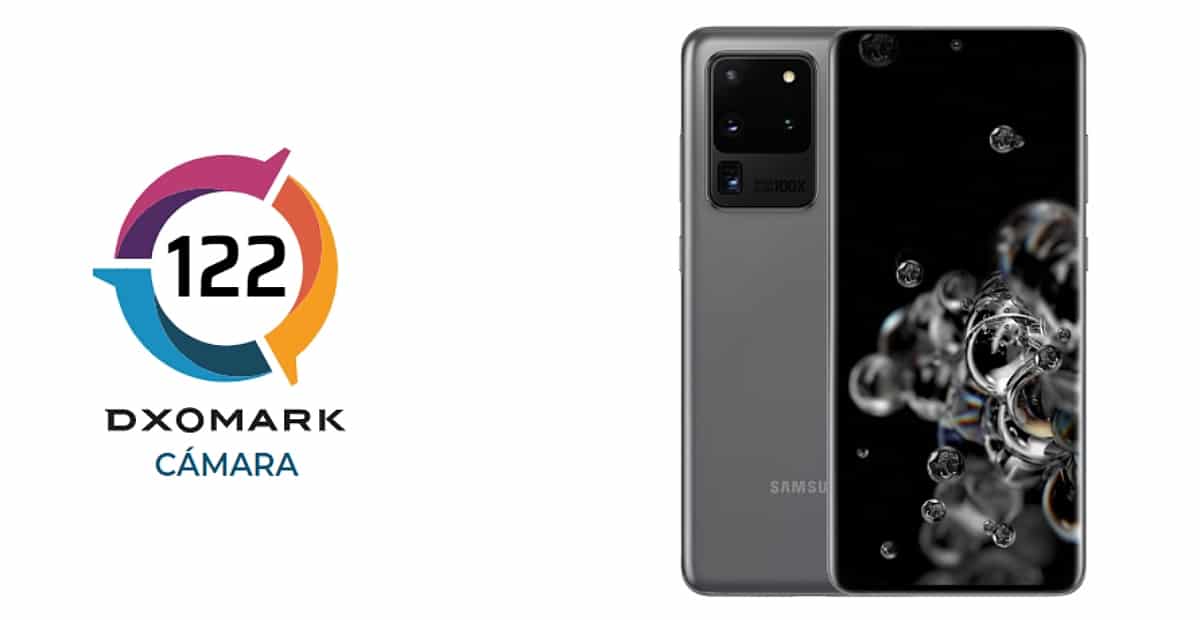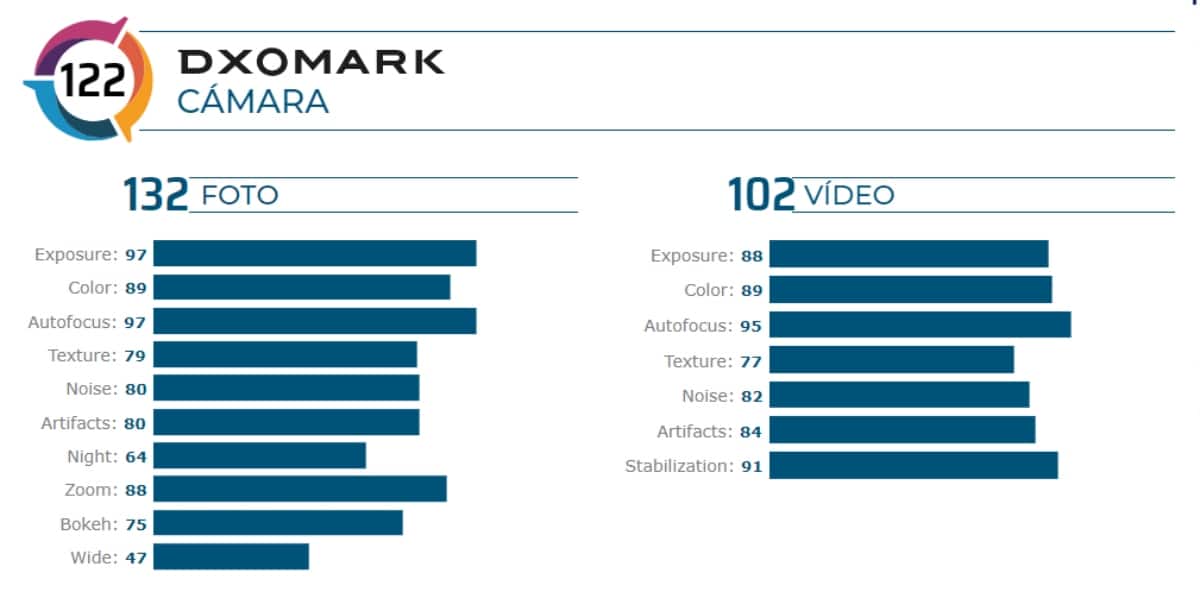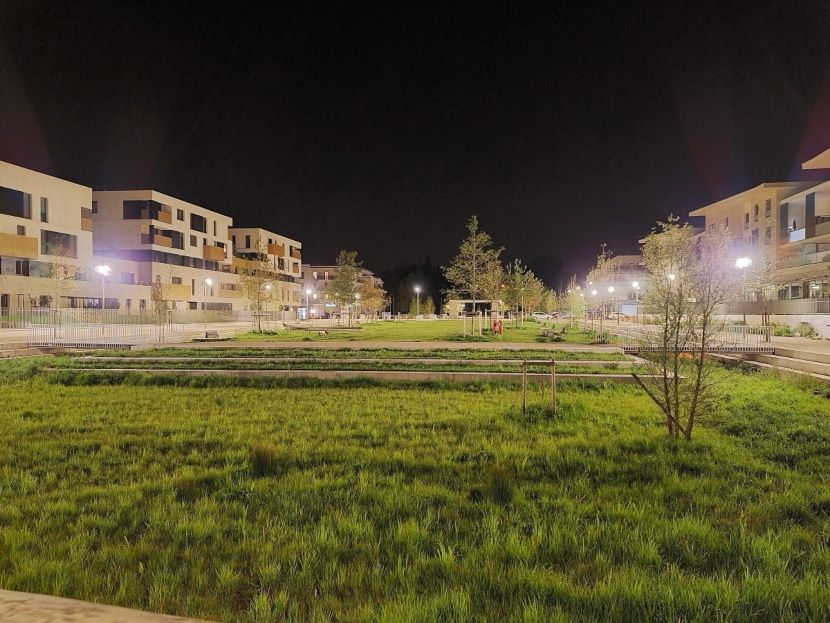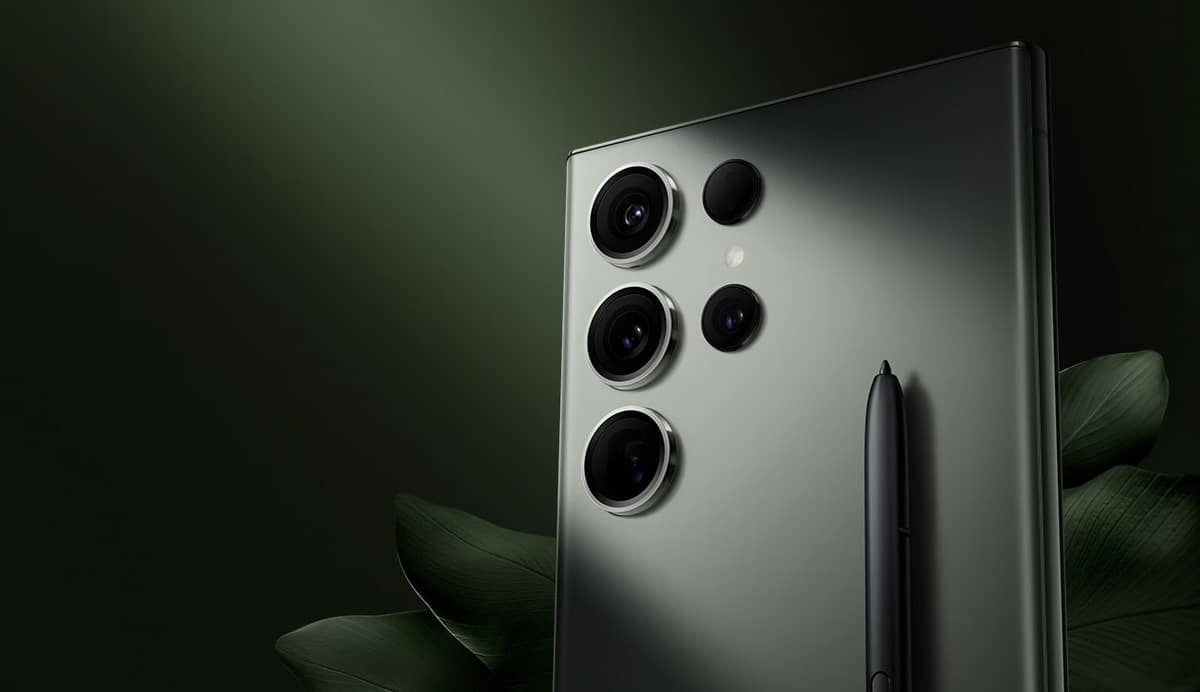
El Samsung Galaxy S20 Ultra It is the most advanced mobile of the entire portfolio of the South Korean company. This one boasts something no other smartphone does, and it's up to 100X zoom.
The rear camera system on this device is one of the best around today. In itself, it has a quadruple grouping that is made up of the following sensors: 108 MP main trigger, 48 MP periscope-telephoto lens, 12 MP ultra-wide-angle sensor and 3 MP ToF 0.3D trigger that also serves for the effect. blur ... Is this combination of shooters the best of all? This is something that DxOMark answer in your new camera review, which is about this mobile.
This is how DxOMark describes the pros and cons of the Galaxy S20 Ultra camera

Galaxy S20 Ultra Camera Test Results | DxOMark
With 122 points, the Samsung Galaxy S20 Ultra offers solid performance in DxOMark tests and it ranks sixth in the platform's camera ranking. A very good score of 132 in the Photo segment means you can be sure of excellent overall still image quality, but a few minor weaknesses mean it doesn't live up to the high standards and consistency of devices like the ones. Huawei P40 Pro, Honor 30 Pro y Oppo Find X2 Pro, which are located at the top of the table.
The images from the main camera show a excellent exposure, dynamic range and color in most lighting conditions, with very few visible artifacts affecting image quality. Noise is generally well controlled indoors and in low light, as you would expect from Samsung's flagship devices. However, while the detail in the 12 MP images of the Galaxy S20 Ultra after pixel binning is generally very good, it is not as high as we have seen on devices outputting higher resolutions. As a result, fine details can be lost in very low light, and the tendency to sharpen images can lead to unnatural-looking details in many shots.
It was also concluded that the terminal's PDAF autofocus system is accurate in most lighting conditions, but response times are quite slow in low-light conditions, where it takes a bit longer than you'd expect from the best.
- Daytime photo with the Galaxy S20 Ultra | DxOMark
- Photo at night with the Galaxy S20 Ultra | DxOMark
The S20 Ultra's wide-angle shooter is excellent, achieving a new maximum score in this category. The exposure and color the lens achieves are primarily accurate in all lighting conditions, and an expansive field of view ensures that you can place loads on the frame, with well-corrected geometric distortion to keep lines straight. The telecamera also works well at medium and long range when the 4x optical zoom lens is fully used.
When shooting in portrait mode, Galaxy S20 Ultra's bokeh images are among the best DxOMark have seen, thus being the mobile with the highest score in this category. Exposure and color are excellent in all lighting conditions, and uniform noise, a good depth estimate, and strong blur effect with large spotlights ensure amazing results.

Galaxy S20 Ultra Bokeh Mode | DxOMark
For night photography, mobile is still a good option too. Its results are not as good as other better performing mobiles, with the noise often a bit more prevalent along with some flash exposure issues, but it is still very acceptable.
How good is it in the video section?
Based on benchmark tests in the laboratory, exposures to video targets on the Samsung Galaxy S20 Ultra were generally accurate, delivering bright and eye-catching video in all lighting conditions from low light (5 lux) to bright light (1000 lux). Therefore, only in extreme low light are videos noticeably under-exposed.
However, when shooting natural test scenes under high contrast conditions, DxOMark testers found that dynamic range was a bit limited and not as good as on the P40 Pro and Find X2 Pro, which resulted in slightly lower scores on their perceptual exposure analyzes. On a more positive note, exposure adaptation is quick and smooth on the Galaxy S20 Ultra, with minimal oscillation or overshoot visible as the intensity of the lighting environment changes.
The vivid and pleasant color is a nice feature of outdoor videos made with the Galaxy S20 Ultra. Generally speaking, the color saturation holds up well in low light conditions as well, but the experts at DxOMark noticed a rendering problem: a visible hue shift in red tones under low tungsten lighting. Nevertheless, white balance is generally accurate in all lighting conditions, which is an advantage, and the white balance adaptation is quick and smooth as the color temperature of the illumination changes.
Video texture is acceptable on the S20 Ultra, and tested at 4K, the movies showed good preservation of detail in most lighting conditions. In bright conditions, it is in line with its biggest competitors, which are at the top of the ranking, but the Samsung device was not as good in low light, with a noticeable loss of texture evident in many of the videos. laboratory and natural scenes. In addition to maintaining good details in the videos, the Galaxy S20 Ultra also handles noise very well in all conditions.
Autofocus is another good point for mobile video, and you really didn't experience the same slow response times that you got with still images. Reaction times were fast in all lighting conditions, with good tracking capabilities. Also, transitions are reasonably smooth as autofocus switches between subjects. However, the stabilization system does not live up to the highest standards. While quite effective on still handheld video in bright lighting conditions, unwanted movement, particularly on high-frequency signals, remains visible in all video indoors and in low light, even when the camera is static.


